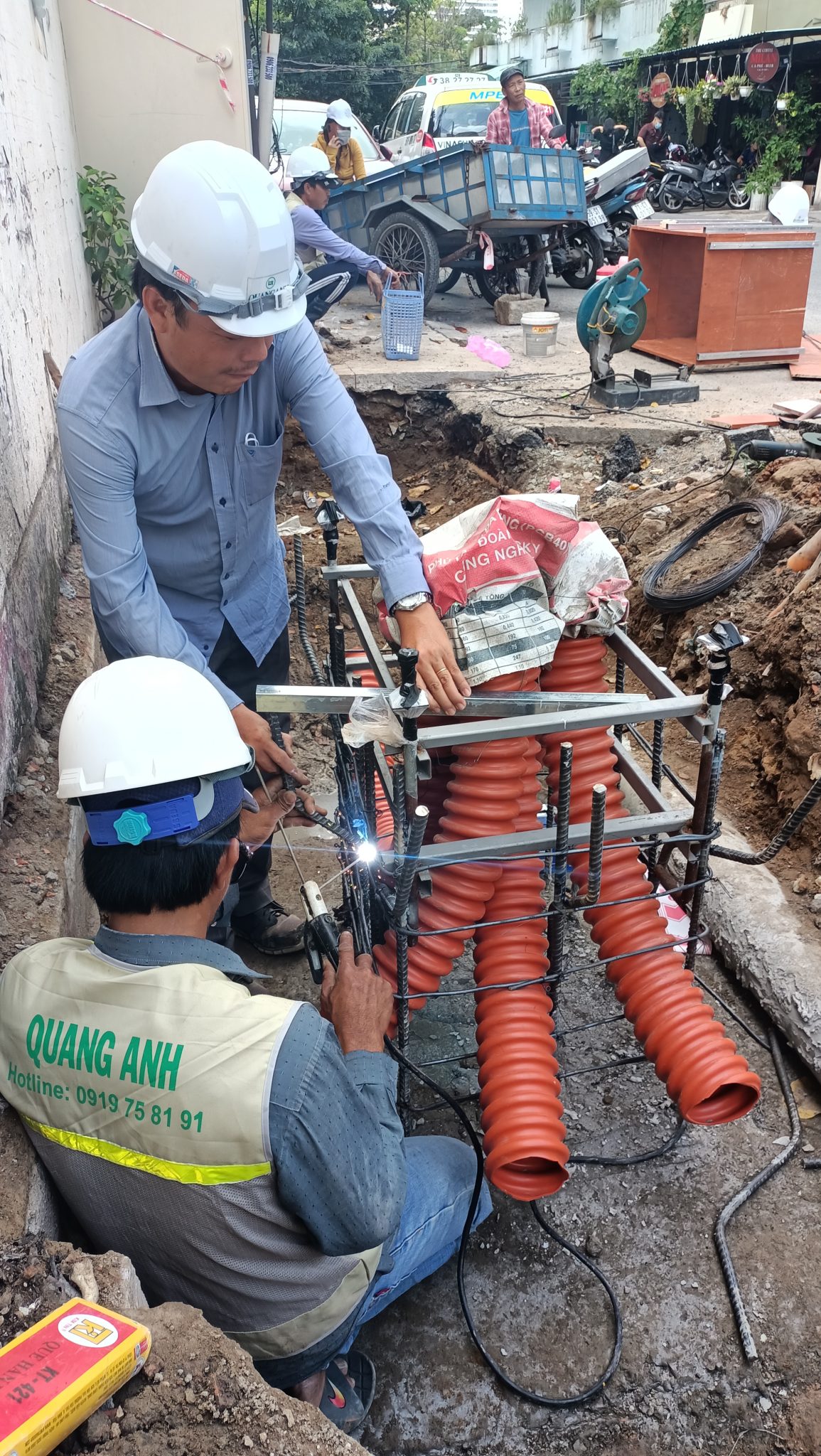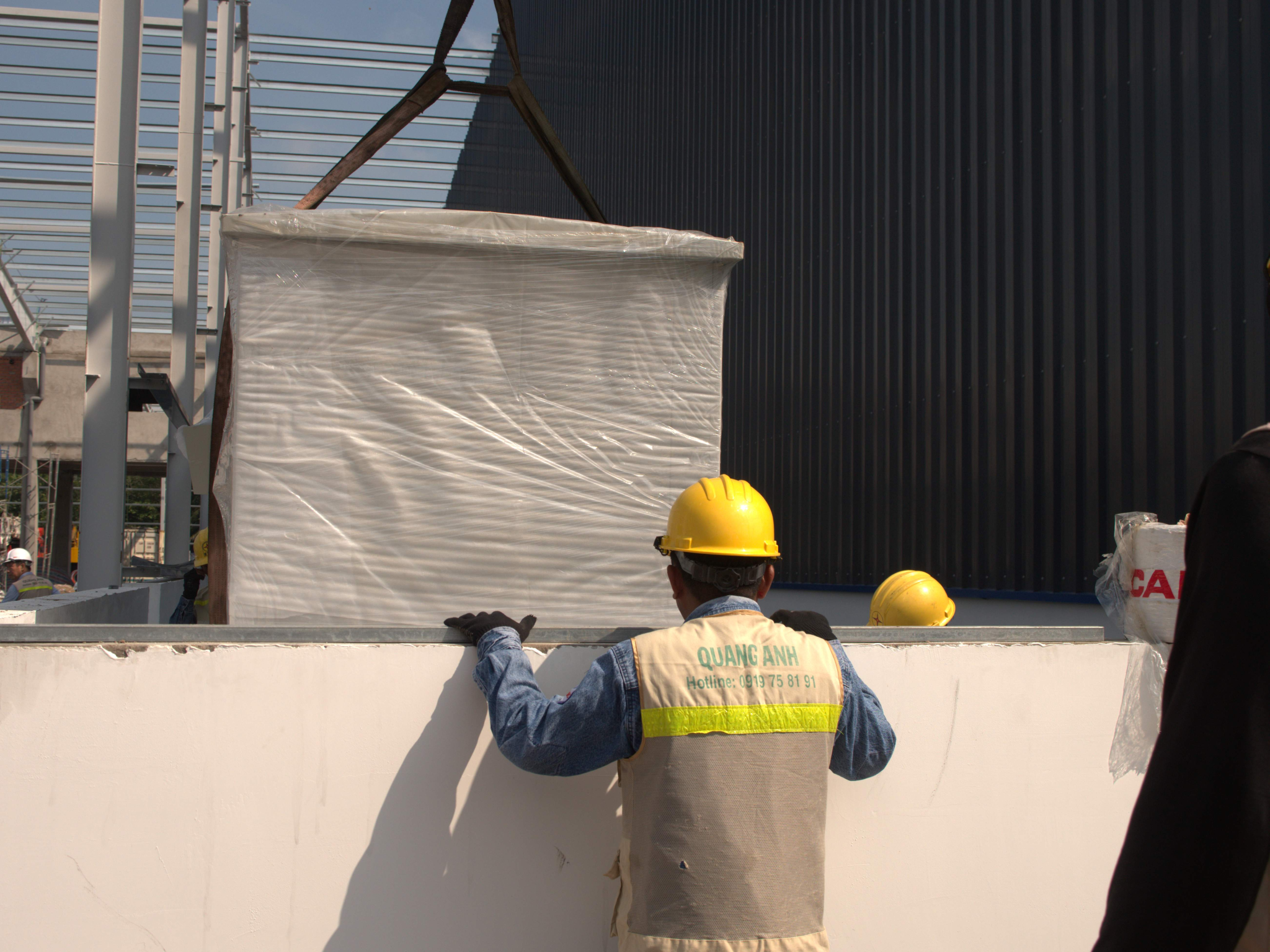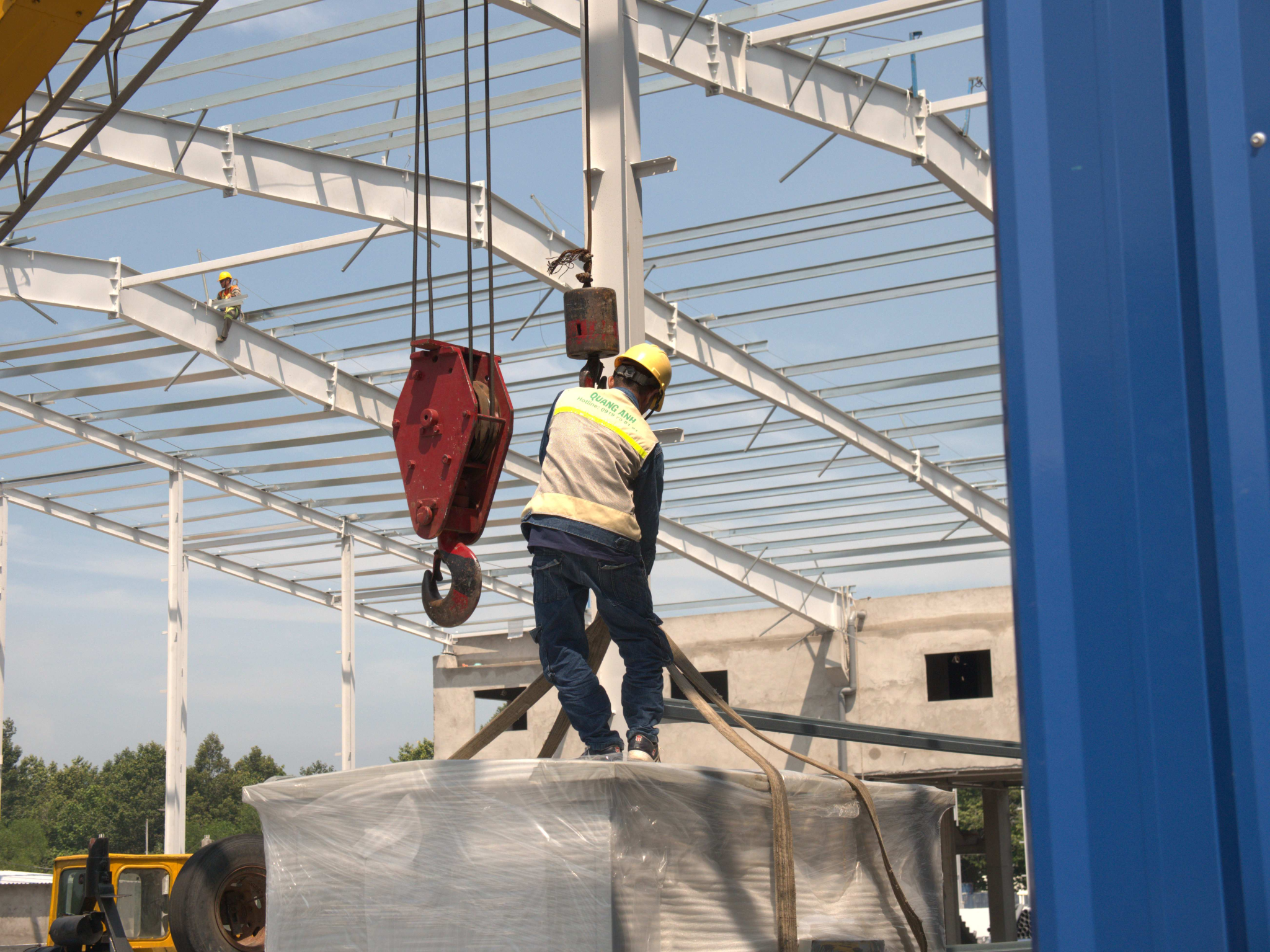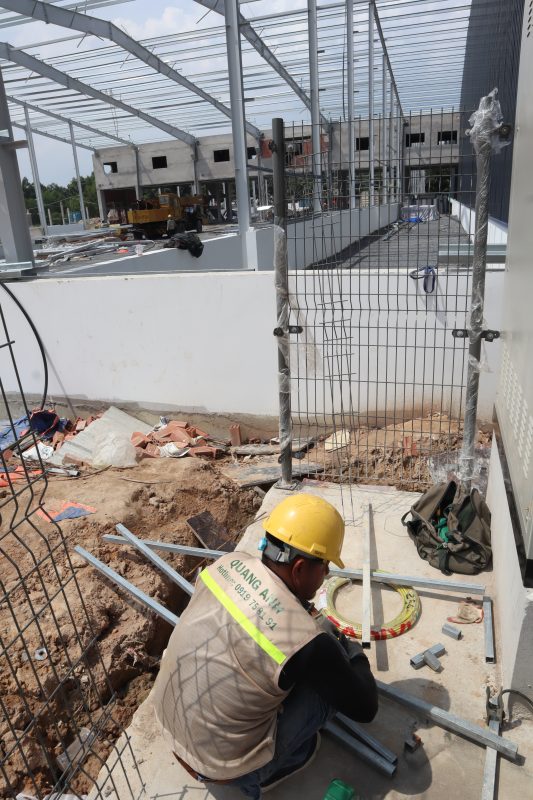Upgrading industrial electrical systems is a complex process involving assessment, design, and execution to meet new capacity requirements and improve operational efficiency.
Procedure for Upgrading Industrial Electrical Systems
The upgrade process involves practical steps like existing condition assessment, new system design based on Vietnamese standards (TCVN), execution of electrical works with appropriate materials and technology, including main power cables, cable tray systems, and installation of electrical equipment like MSB distribution boards and grounding systems. Finally, operational testing and regular maintenance ensure stable system performance.
Survey and Condition Assessment
- Analyze the Old System: The initial step is to evaluate power capabilities, wiring condition, cut-off devices, and current capacity of the old system to identify required changes for compliance.
- Determine Power Requirements: Calculating the current power consumption is essential for forecasting and choosing the right equipment.
- Risk Identification: Evaluate safety weaknesses and overload risks to implement corrective measures.
System Redesign
- Create Technical Blueprints: Adjust positioning of electrical boards, wiring, and lighting as per TCVN standards.
- Select Materials and Equipment:
- Power Cables: Choose appropriate wire cross-sections based on load capacity, voltage drop, and routings.
- Protection Devices: Utilize MCCB/ACB with proper interruption capacity for electrical protection.
- Cable Schedule Table: Detail cable specifications for efficient construction management.
Material and Equipment Preparations
- Procure Quality Materials: Prioritize energy-saving devices with quality certifications.
- Quality Assurance: Ensure equipment meets IEC or TCVN standards before installation for optimal energy usage.
Execution of Upgrades
- Install Medium Voltage Underground Cables: Use uPVC or HDPE conduits to connect cables from the power source to transformers with specialized terminations.
- Replace Distribution Boards: Integrate metering systems and install dry-type transformers to reduce energy losses.
- Lighting System: Arrange lights for standard brightness and use smart switches for automation.
Testing and Acceptance
- No-Load Testing: Ensure each electric circuit operates safely.
- Safety Measurements: Insulation resistance should be ≥ 1 MΩ; voltage drop should not exceed 5% per TCVN standards.
- Documentation Handover: Provide circuit schematic and operational guidelines for long-term maintenance.
Post-Upgrade Optimization
- Energy Monitoring: Install SCADA for real-time energy consumption management.
- Regular Maintenance: Perform cabinet cleaning, tighten terminals, and timely replace aging equipment.
Applicable Standards
- Electrical Safety: Comply with QCVN 12:2015/BCT on electrical equipment installation.
- Energy Efficiency: Apply DSM model for power consumption management.
Key Considerations
- Coordinate with Power Companies: Obtain permissions from electricity distributors before connecting medium voltage systems.
- Personnel Training: Provide training to technicians for effective system operation.

Technical Elements in Industrial Electrical System Enhancement
Key technical elements when upgrading include occupational safety with personal protective equipment, cost optimization through durable materials selection, smart power adjustment systems, and compliance with legal standards like TCVN 9206:2012 for quality and safety in industrial installations.
Calculating total power consumption is necessary for selecting appropriate conductors and ensuring system stability—essential to avoid overload and ensure worker safety.
Designing the main power cable system is another important factor; cables may be installed above ground or beneath in PVC or metal conduits for optimal performance and easy maintenance.
Positioning electrical cabinets is crucial. Cabinets like distribution boards, central control units, ATS, and compensation cupboards should be arranged efficiently to optimize space and ease of operation, preventing the spread of incidents.
Focus on lightweight electrical systems ensuring adequate lighting, stable network connectivity, and reliable fire alarms. Strict adherence to industrial electrical standards enhances durability and safety.
Safety and performance are top priorities in electrical system upgrades, designed to minimize energy wastage, ensuring safety for personnel and equipment during operation.
Lastly, lighting system design should carefully balance lamp numbers to avoid production disruptions and prevent energy waste.
Post-installation, thorough acceptance testing and inspection ensure all components function properly before official use.

Emerging Tech Trends in Industrial Electrical Systems
New technology trends in system upgrades include IoT surveillance systems integrated with monitoring sensors for early fault alerts, rooftop solar panel integration for renewable energy operation, and PLC applications to automate power distribution for optimized operations and cost reduction.
In 2025, substantial changes are occurring in industrial electrical systems, with new technologies improving efficiency and reducing costs. Notably, solar energy technology is prominent, where high-efficiency solar panels using hybrid perovskite and improved silicon materials can achieve energy conversion efficiency above 30%. This enhances economic benefits and environmental friendliness.
Factories can benefit from installing large rooftop solar systems to reduce reliance on power grids and energy costs. The integration of AI in electrical systems is a significant advancement, enabling weather data analysis and consumption forecasting to optimize operation capacity.
Energy Optimization and Factory Electrical Savings
Optimization includes conducting energy audits to identify and reduce waste. Adjusting equipment schedules to utilize off-peak hours contributes to effective saving strategies. Inefficient equipment should be replaced with high-efficiency alternatives for cost savings and energy optimization.
Additionally, fostering an energy-saving awareness among employees is essential, alongside regular electrical system maintenance to ensure operational efficiency and minimize failures.
Improving the Power Grid System
To enhance transmission and distribution capabilities, the electric industry is investing in new technology to upgrade grid infrastructure. These advancements increase system efficiency and significantly support sustainable development goals through the promotion of renewable energy use.
With numerous changes, advanced technologies like solar power and artificial intelligence are revolutionizing industrial electrical systems. Investing and implementing these solutions help businesses reduce costs and contribute to environmental protection.

Upgrading industrial electrical systems brings numerous benefits, technically, financially, and strategically, improving performance and reducing long-term costs.
Contact QuangAnhcons today at +84 9 1975 8191 for professional industrial electrical system upgrade consulting.
QuangAnhcons offers comprehensive services for upgrading industrial electrical systems from design to construction and maintenance, backed by an experienced engineering team and advanced technologies.


Related Posts
Factory Electrical Systems: Comprehensive Design and Implementation Guide
Discover the detailed and safe process of factory electrical systems design and implementation. [...]
Oct
Blueprints Required for Factory Construction Permits
Discover the necessary blueprints in factory construction permit applications, from floor plans to electrical and [...]
Oct
What Are the Requirements for a Factory Construction Permit? A Comprehensive Guide
Explore the documentation and steps needed to secure a factory construction permit for streamlined project [...]
Oct
Factory Construction Permit Procedures in Vietnam: Essential Guidelines and Documents
Learn the procedures for securing a factory construction permit in Vietnam, focusing on document preparation [...]
Oct
Key Steps in the Factory Construction Process
Discover the essential steps and requirements for building factories. [...]
Oct
Comprehensive Electrical Substation Solutions by Quanganhcons
Discover the cutting-edge electrical substation solutions offered by Quanganhcons for industrial applications. [...]
Oct
Investment Costs for a 1MWp Solar Power System and Influencing Factors
Explore the investment costs for a 1MWp solar power system in Vietnam and the influencing [...]
Sep
QuangAnhcons: Elevating Wind Energy Solutions
Explore QuangAnhcons' leadership in wind energy and renewable solutions in Vietnam. [...]
Sep
Electrical Contractor Strategies at Becamex Industrial Park
Discover the strategic advancements and partnerships of the electrical contractor at Becamex Industrial Park. [...]
Sep
Investment Insights for 1MW Wind Energy in Vietnam: Costs and Opportunities
Discover the detailed analysis of costs and opportunities for investing in 1MW wind energy projects [...]
Sep
Advanced Electrical Installation Solutions by QuangAnhcons
Explore advanced electrical installation solutions and modern technology with QuangAnhcons. [...]
Sep
Enhancing Industrial Electrical Services with Quanganhcons
Discover Quanganhcons' expertise in industrial electrical services, offering efficient and sustainable power systems. [...]
Sep
Comprehensive MEP Solutions by QuangAnhcons: From Design to Maintenance Excellence
Discover optimal MEP solutions with QuangAnhcons, dedicated to excellence from design through maintenance. [...]
Sep
Comprehensive Electromechanical Contracting Solutions by QuangAnhcons
Explore QuangAnhcons' comprehensive services for efficient and safe energy system solutions. [...]
Sep
QuangAnhcons: Empowering Industrial Energy Solutions
Discover how QuangAnhcons delivers optimal industrial EPC solutions. [...]
Sep
Effective Industrial Construction Management and Execution
Optimize your industrial projects from design to execution with our contractor services. [...]
Sep
QuangAnhcons: Pioneers in M&E and Renewable Energy Solutions
Discover QuangAnhcons' innovative M&E services and renewable energy solutions. [...]
Sep
QuangAnhcons: Expertise and Outstanding Services in the Electrical Sector
Discover the unmatched expertise and services of QuangAnhcons, setting superior standards in the electrical contracting [...]
Sep
QuangAnhcons: Innovation and Precision in Industrial Electrical Contracting
Discover QuangAnhcons, a top contractor offering superior electro-mechanical solutions. [...]
Aug
Expert Solutions for 2x2500kVA Substation Projects with QuangAnhCons
Explore QuangAnhCons, a forefront entity in designing and constructing large industrial substations. [...]
Aug